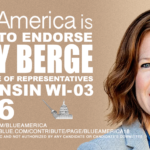Segregation isn't dead by a long shot, but it's more prevalent in cities like New York and Chicago than it is in the Deep South.
“The children who most depend on the public schools for any chance in life are concentrated in schools struggling with all the dimensions of family and neighborhood poverty and isolation,” Gary Orfield, co-director of UCLA’s Civil Rights Project/Proyecto Derechos Civiles and professor at UCLA’s Graduate School of Education, wrote in the report.
Orfield and Civil Rights Project senior researcher John Kucsera used Department of Education statistics to look at public school enrollment in New York City, its surrounding counties and upstate New York between 1989 and 2010.
They found that while nearly 50 percent of public school students in New York state are considered low-income, black and Latino students tend to enroll at schools where about 70 percent of students are low-income, while white students attend schools where 30 percent of students are low-income.
What’s more, the proportion of black students attending public schools considered “intensely segregated” — which the authors define as having a student body that’s less than 10 percent white — is on the rise. For example, in New York City, the country’s largest school system, 60 percent of the state’s black public school students attend school in the five boroughs, along with two-thirds of the state’s Asian and Latino students — but only 10 percent of New York state’s white students.
But what about charter schools, you ask? Surely they're less segregated than their neighborhood public school brethren, because school choice, right? Not so much.
New York City’s charter schools are particularly segregated. Among the city’s 123 charter schools, nearly all of them had less than 10 percent white enrollment in 2010, largely based on segregated housing patterns. Some 73 percent of charter schools were what the authors called “apartheid schools,” meaning they had less than 1 percent white enrollment.
The authors told reporters in a conference call that changing demographics in the state paired with a lack of diversity-focused policies — which include subpar transportation systems for students and restrictive admissions standards — had caused the increasing segregation of public school students.
“If you don’t have an intention to create diverse schools, they rarely happen,” Orfield said.
When Los Angeles first started experimenting with ways to overcome segregation, they created magnet schools, which were schools contained and controlled by the same Board of Education as neighborhood public schools, but which had a focus that would appeal to students across the spectrum. Whether it was music or science, or the fine arts, those schools were intended to be attractive to students regardless of their race or level of affluence. For the most part they worked, particularly in the area of desegregation, though in recent years there have been issues with funding and enrollments.
And yes, the turn away from placing a priority on desegregation began with Reagan:
How did New York get this way? Forty years ago, according to the report, New York state made “school desegregation … a serious component of the state’s education policy as a result of community pressure and legal cases.” Legal fights in Yonkers and Rochester respectively targeted housing and educational segregation and resulted in an inter-district transfer program. New York City never saw a lawsuit over school segregation but community leaders “challenged practices and policies that perpetuated racial imbalance and educational inequity across schools.”
But during the Reagan administration, policy shifted focus. New York instead looked to newly popular ideas to improve school quality: charter schools, school choice and school accountability. “By the early twenty-first century, most desegregation orders in key metropolitan areas were small and short-lived due to unitary status and many programs designed to voluntarily improve racial integration levels, like magnet schools, are now failing to achieve racial balance levels due to residential patterns, a lack of commitment, market-oriented framework and school policy reversals,” the authors write. And while many New Yorkers involved in the landmark Brown v. Board of Education case tried to alter the racial composition of New York’s schools, nothing happened — not even one school in Harlem was integrated.
Magnets are still the way to fix this, but they would take a financial and ideological commitment:
“Having something that’s really compelling and educationally outreaching to parents, welcoming them, making sure their students aren’t extremely isolated … and having something that’s really worth choosing, and providing transportation for students that can’t provide their own, those are the key elements," Orfield said.
What a concept. Focus on education and the individual gifts every child has, and we might actually begin to solve these problems.


















